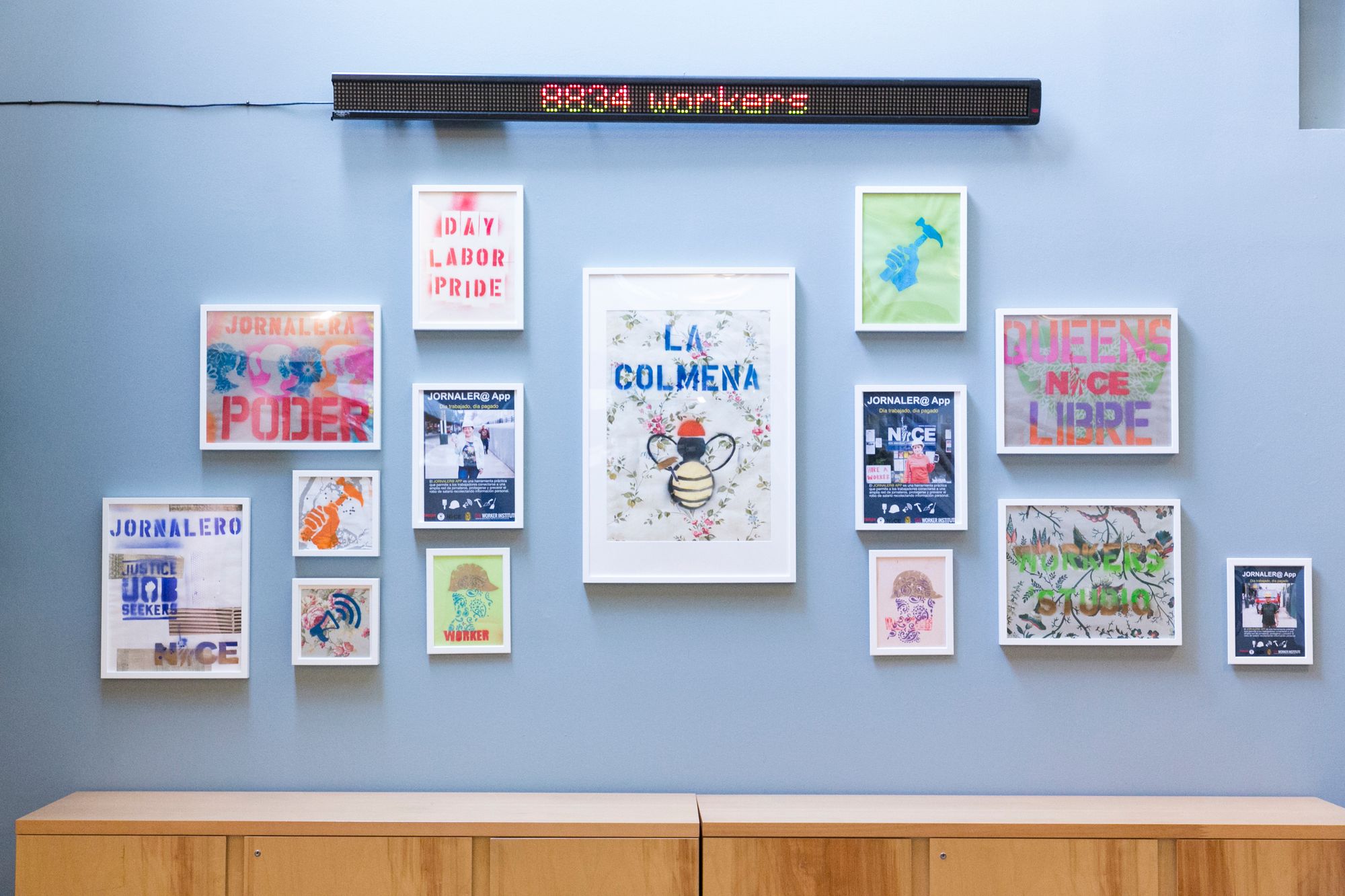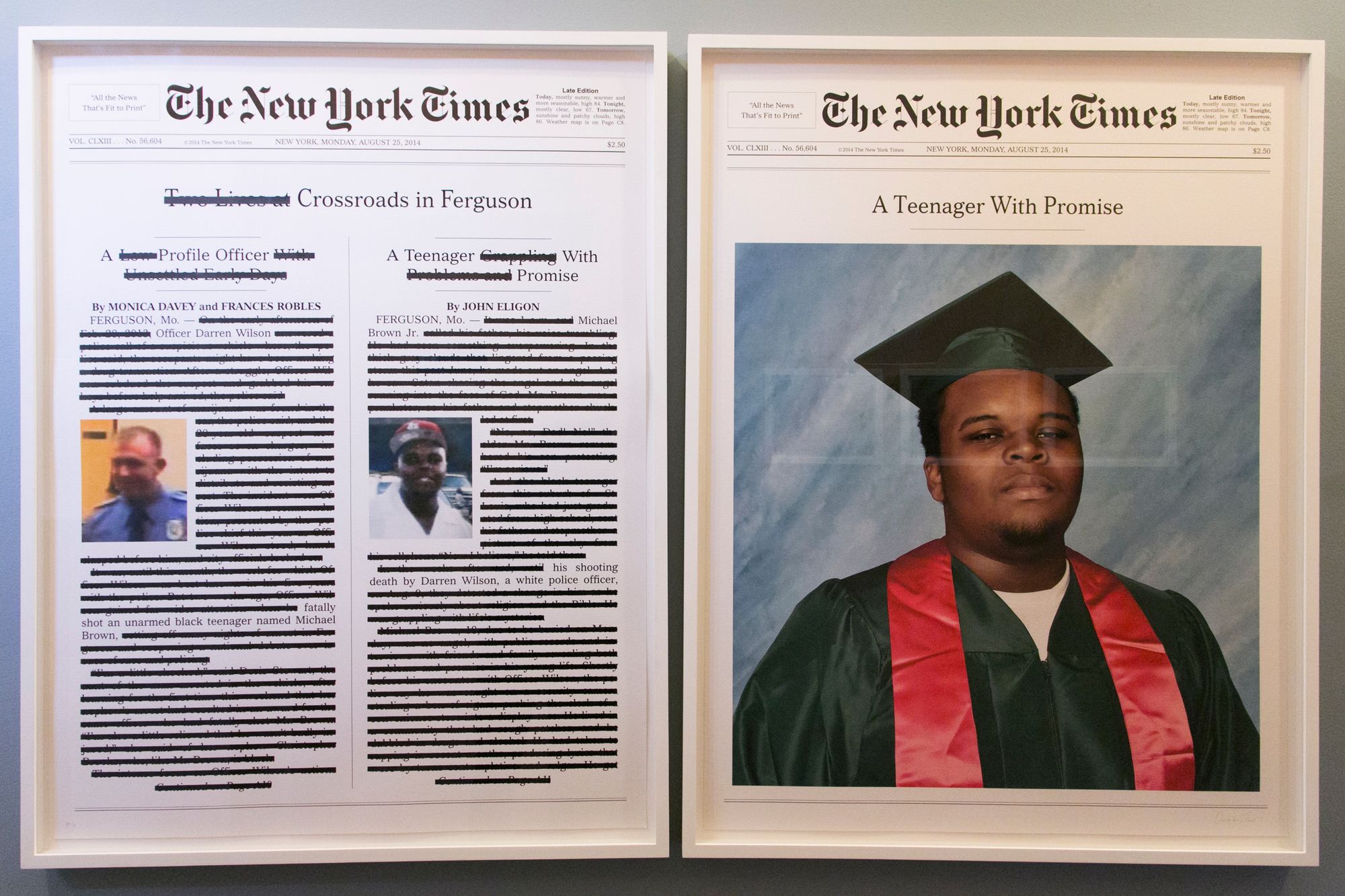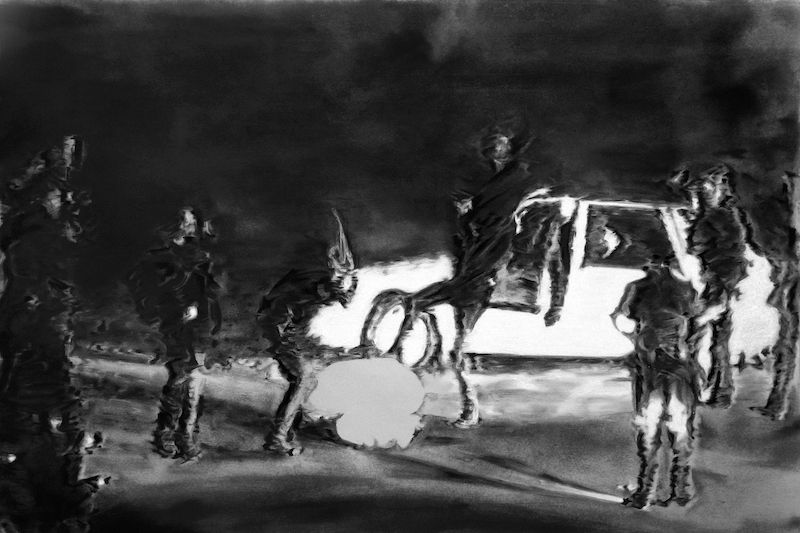NYC's Long-Awaited Davis Center Opens in Central Park
A stunning new facility at Harlem Meer opens to the public this weekend!



Here is an interesting exercise: looking at documents on which the country’s national character and sense of self is built—the United States Constitution, say, or the Declaration of Independence—in the context of the past few years, or of this past year in particular. We hold these Truths to be self evident, that all men are created equal, that they are endowed by their Creator with certain unalienable Rights, that among these are Life, Liberty, and the Pursuit of Happiness, reads the Declaration; —that to secure these Rights, Governments are instituted among Men, deriving their just Powers from the Consent of the Governed. No Longer Empty, an organization that uses contemporary art to explore history and community, has curated an exhibit with the Nathan Cummings Foundation called Hold These Truths, a fragment of the sentence from the Declaration, to tell a story of incomplete independence, and incomplete justice.
Curated by Rachel Gugelberger and Manon Slome, the exhibit includes the work of 22 artists and collectives, including Sol Aramendi, Nona Faustine, Alexandra Bell, and Ramiro Gomez. The works are a mix of graphics, text, paintings, and footage that responds to the current political moment, documenting both injustices as well as resistance. “We wanted to counter the assault on language and identity, the rejection of science and truth, and contest the singular voices we’re hearing in the media,” co-curator Rachel Gugelberger said.

A Teenager with Promise, 2017 by Alexandra Bell; screen-print and archival pigment print on paper. Image by Whitney Browne via No Longer Empty
The exhibit winds all the way through the Nathan Cummings Foundation offices, and the first display you encounter, in the front hall, shows an LED ticker chronicling the instances of wage theft in real time, using data from the Jornalero Wage Theft App, which allows laborers to log their hours and wages, as well as rate, photograph, and mark the location of their employers, to alert other workers.
Around the corner from this ticker is an archival pigment print of a woman of color holding a white toddler, both faceless and sitting on the grass, titled “Nanny and Child,” by Ramiro Gomez and David Feldman, artists whose work largely consists of inserting immigrants into images of architecture, construction, and design. Behind this, photographer Nona Faustine stands naked on the steps of the Supreme Court in a self portrait, a reminder of the African American bodies before her who were sold in the United States, and their vulnerability.

Rodney King, 2017 by Shaun Leonardo. Charcoal on paper. Photo courtesy the artist
New York Times articles reporting the murder of Michael Brown have their more euphemistic and sometimes overtly racist text blotted out, to highlight the fundamental story of discrimination that leads to these acts of violence—a story that, in all its simplicity, has repeatedly been muddled, and granted the privilege of nuance, and then forgiven.
A short video called “We Are in Crisis” (by CANNUPA HANSKA LUGER with Winter Count) pays tribute to water, and to the land, and to their protectors, those who have been resisting the DAPL with their bodies and voices and those who recognize that water is life. A photograph of the Statue of Liberty by Nona Faustine is hazed across the middle by an angry black blotch, a symbol of the resistance to immigrants that has been a part of this country’s history for as long as its openness has.
A large print by Kamau Ware reads in almost invisible text, TRUTH IS A CREATIVE PROCESS. It is not, as the Declaration implied, self-evident. Against a legacy of injustices and violence—and particularly in this moment of alternative facts, where all that matters is convincing performance—to not only relay the truth but to bebelieved
, takes immense creative effort.The broader message of the exhibit is that there is, of course, an America that is as old as the Declaration itself, where the “truth that all men are created equal” is far from self-evident, and not even recognized; in this America, the government does not “secure” for its people “certain unalienable Rights” that their Creator “endows”—in this America, the government is the creator, and it grants these “Rights” with excessive caution and stinginess; and in this America, led by a candidate who lost the popular vote, the government certainly doesn’t “derive its Powers from the Consent of the Governed.”
The exhibit attempts to bring to light this America, that is ever more prominent today, and counter it with another America. “These are American voices, and our government doesn’t reflect them,” Gugelberger said. “It’s inspiring to see how loud these voices are.” All of these works need to be taken as a direct reply to the Declaration’s line from which the exhibit takes its name—voices that have other Truths to offer, Truths that have been excluded from the document’s ideals, proving this line wrong in their quiet and gentle rage.
The exhibit will be on view through March 14, 2018 at the Nathan Cummings Foundation, 475 Tenth Avenue on the 14th Floor. Viewing hours by appointment only, Monday-Friday, 9:30am–5pm. To see the exhibition contact the Nathan Cummings Foundation at exhibits@nathancummings.org. View the accompanying exhibition book here.
Next, read about how the Department of Defense Threatens to Shutdown NYC Art Exhibition by Guantánamo Detainees.
Subscribe to our newsletter